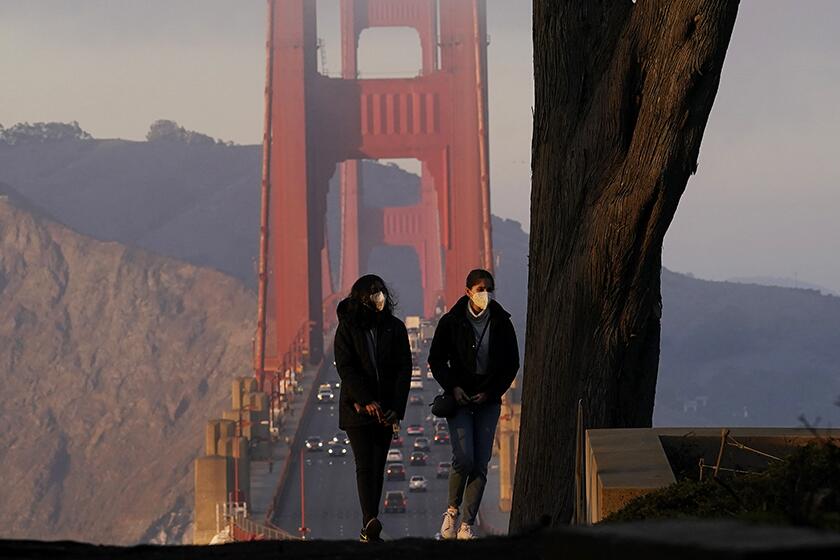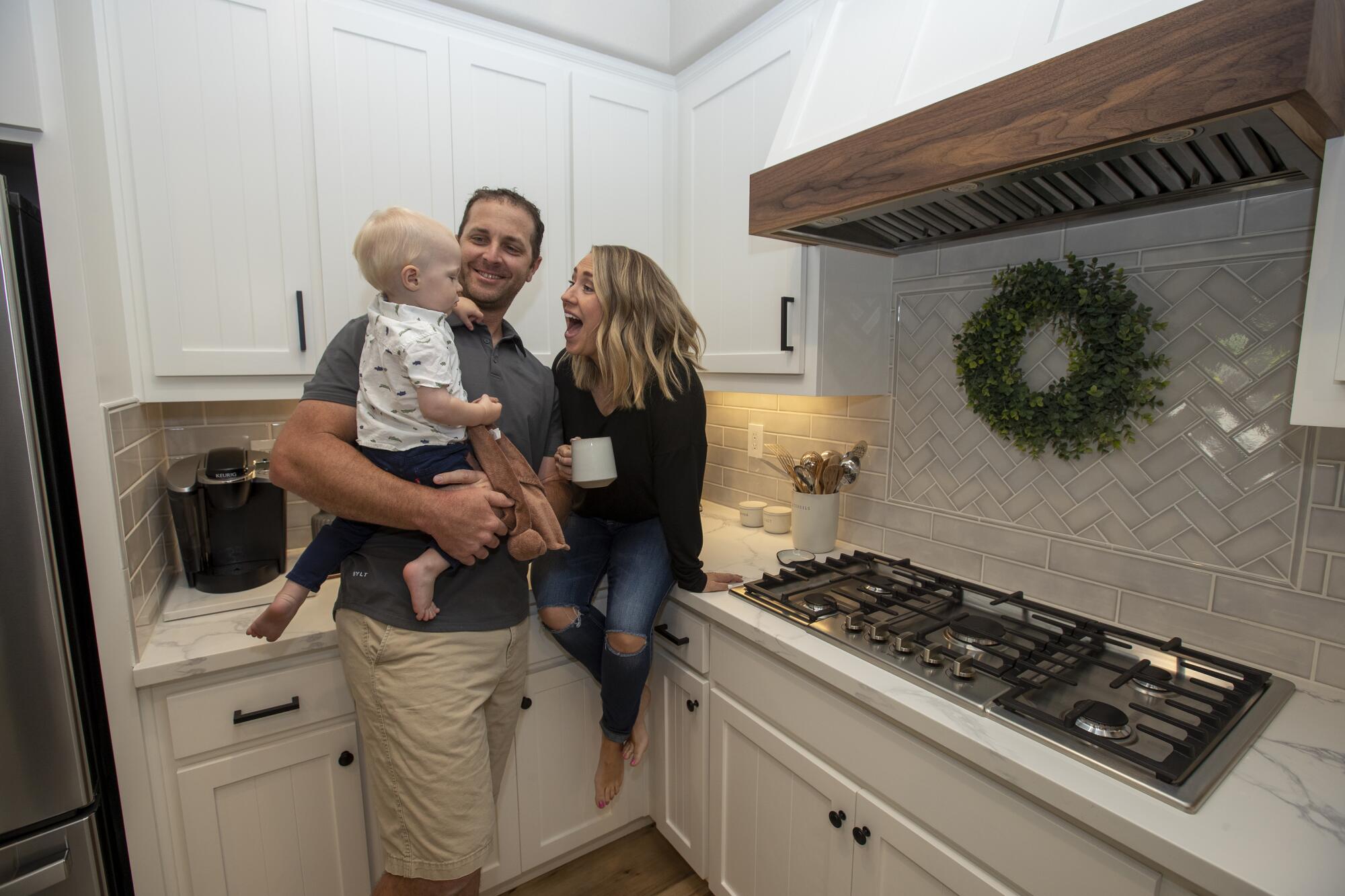
- Share via
EL DORADO HILLS, Calif. — Rebecca Luke was itching to move her family out of the Bay Area, fed up with soaring property taxes, epic commuter crawls and home prices aimed at Silicon Valley venture capitalists.
As an executive assistant in the medical technology field she needed to be close to her company’s office in Emeryville, between Berkeley and Oakland. Her husband, Brian, had a little more flexibility because of the multiple-day shifts he spent living and working out of the Santa Clara County Fire Department.
But when the pandemic hit and Luke began to work remotely from their Livermore home, she saw an opening to upgrade her family’s quality of life.
Some of her husband’s co-workers had been moving to a growing but still affordable Sacramento suburb called El Dorado Hills. In October, the couple packed up their then-7-month-old boy and drove to their new home.
Now, every time she takes a walk around her neighborhood, Luke knows that her family made the right choice.
The Great California Migration
This is the first in an occasional series of stories about Californians on the move, both to other states and within the Golden State. The state’s growth rate is the lowest in well over a century, and the pandemic has given many residents a further excuse to leave California’s big cities, which are among the most expensive places to live in the country.
“In the Bay Area, I couldn’t take my son and pop him in the stroller and walk to the park or take a scenic walk. It was just very congested, always sitting in traffic,” the 36-year-old said. “Here, I can pop him in the stroller and be at the park in five or 10 minutes. It’s a different way of living. It’s a simpler way.”
Most Californians who moved in 2020 stayed in-state, many trading city life in the Bay Area or Los Angeles for suburban or rural communities. A growing number of families have moved inland over the last few years, data show, fueled by the hunt for more open space, a sense of community and affordable housing.
But the migratory shift grew even more pronounced amid the pandemic, experts say, as the barriers to moving dropped for many in large cities, spurred by a newfound ability to work remotely.
Although the demographics of those moving eastward in recent years differ from those in previous generations, this recent surge of migration fits a familiar pattern of families escaping densely populated cities for inland regions — a trend that dates back to the mid-20th century settlers who became the suburban pioneers of Southern California, said D.J. Waldie, author of “Holy Land: A Suburban Memoir.”
More recently, in the 1990s and early 2000s, families moved out of neighborhoods in South L.A., Waldie said, and made for neighborhoods in Riverside and San Bernardino counties. Those who left then — many working in fields such as construction, plumbing and electrical contracting, before the wreckage of the Great Recession — held vastly different jobs than the tech and other high-skilled workers leaving urban centers today.
“Inland migration today looks to be the migration of well-to-do families, comfortable wage earners, making use of remote work to live somewhere other than an expensive coastal city like Santa Cruz or San Francisco,” Waldie said. “In the 1990s, the inland migration was by people who were only marginally capable of purchasing a new home. It was mostly people of color moving from portions of Southern California that were experiencing an epidemic of crime.”
Among the new booming counties is El Dorado, the birthplace of the California Gold Rush, which has absorbed an influx of Bay Area transplants who, in search of affordable homes, well-rated schools and access to the outdoors, have packed up their U-Hauls and headed northeast.
Subscribers get early access to this story
We’re offering L.A. Times subscribers first access to our best journalism. Thank you for your support.
“It’s really just an opportunity for people who have felt pent up and squeezed in the Bay Area and felt handcuffed that they had to stay there,” said Jon Yoffie, a real estate agent in El Dorado Hills.
Many recent arrivals are young families and retirees looking for more land or following their adult children.
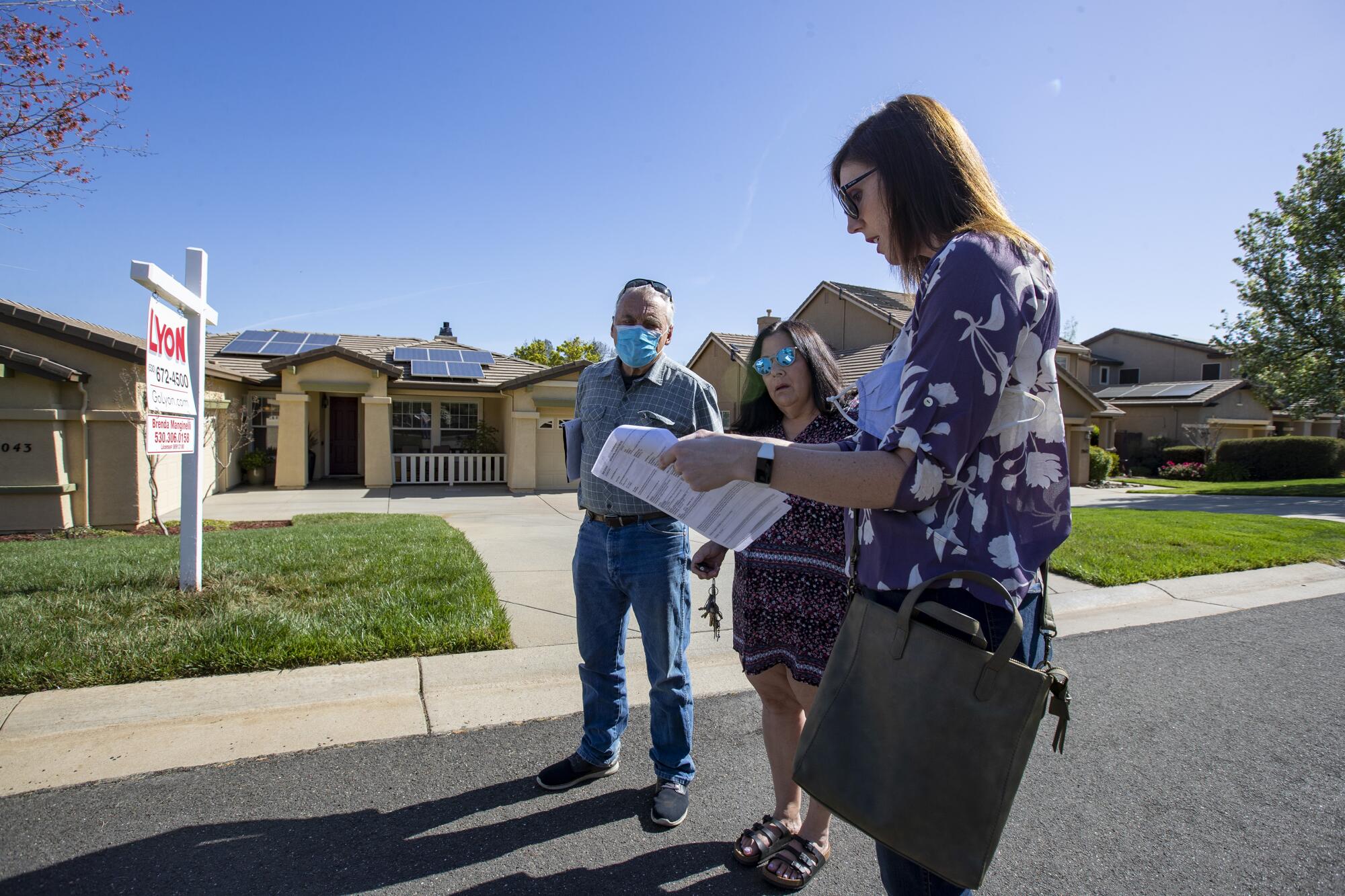
Sprawled across a stretch of the Gold Rush Trail of the mid-19th century, El Dorado County was born amid mining-town justice — Placerville still is known as Hangtown — and parts of it have grown into a Sacramento bedroom community. The county, population 193,000, is nearly 89% white, census data show. Its median household income is roughly $83,000, lower than the $137,000 median income of El Dorado Hills, where fed-up Bay Area exiles and Sacramentans have flocked.
The Lukes joined the flow after nearly a dozen of Brian’s fellow firefighters moved to El Dorado Hills in the last few years. His friends described a neighborhood with a sense of community, filled with young families.
Intrigued after looking at homes online, the couple spent their first wedding anniversary driving through the area and gazing at the manicured homes.
Brian, 38, who once thought it “crazy” that his co-workers would live more than two hours from their jobs at the Santa Clara County Fire Department and wake up at 3:30 a.m. to commute, suddenly saw the draw.
“We drove up and thought, ‘Holy cow, we wish we knew about this earlier,’” he recalled.
After losing bids on two homes, the pair moved last fall to their new El Dorado Hills house, about twice the size of their 1920s Livermore home at 3,600 square feet, with an open floor plan, “massive backyard,” pool and outdoor kitchen. The competition wasn’t as steep as in the Bay, but they paid $110,000 over the home’s $825,000 asking price.
“Our friends who moved here two years ago from San Jose said, ‘Oh, you only have to offer $1,000 more [than asking] to show you really want the house,’” Rebecca Luke said. “They cannot believe how much it’s changed in terms of getting into a house.”
The number of Californians like the Lukes leaving the Bay Area, particularly those from San Francisco, has soared since the pandemic began, a March study by the nonpartisan California Policy Lab found.
During the fourth quarter of 2020, San Francisco saw the largest percentage change in residential exits — 61% — of any county in the state, data show, as transplants took their transportable work and relatively high incomes with them.
Many who leave the Bay Area do not move far. Counties in the Sierra region, including El Dorado, saw a large influx of migrants from San Francisco compared with 2019. Some 4,724 people moved to El Dorado County in the fourth quarter of 2020, according to the the March report — a 23.8% growth in entrances compared with the previous year. Neighboring Amador and Placer counties saw 22.5% and 12% growth, respectively.
“Affordability is one factor, but I think the quality of life is also a factor,” Yoffie, the real estate agent, said. “I always tell people what hit me when we moved here is that you hit a four-way stop, and the person ahead of you waves for you to go first. It’s not Mayberry, but it’s comfortable.”
The Bay Area-El Dorado County relationship fits a classic pattern, long predating the pandemic, of high earners moving to a lower-earning area and driving up the cost of living.
“We see people moving with wages from a different region and then purchasing homes not relative to the local economy,” said Bernadette Austin, executive director of the UC Davis Center for Regional Change, who is researching migratory patterns alongside other scholars.
El Dorado County has held on to its small-town vibe, residents say, but newcomers are making it both more expensive and more diverse.
Bill Roby, 67, and his husband, James, moved to El Dorado County from the Bay Area in 2005, where they settled on six acres in Shingle Springs, a rural part of the county with larger plots and open space.
“It’s a very rural environment where I can’t even see my neighbor’s home,” said Roby, who, like the majority of El Dorado County residents, lives outside the two incorporated cities of Placerville and South Lake Tahoe.
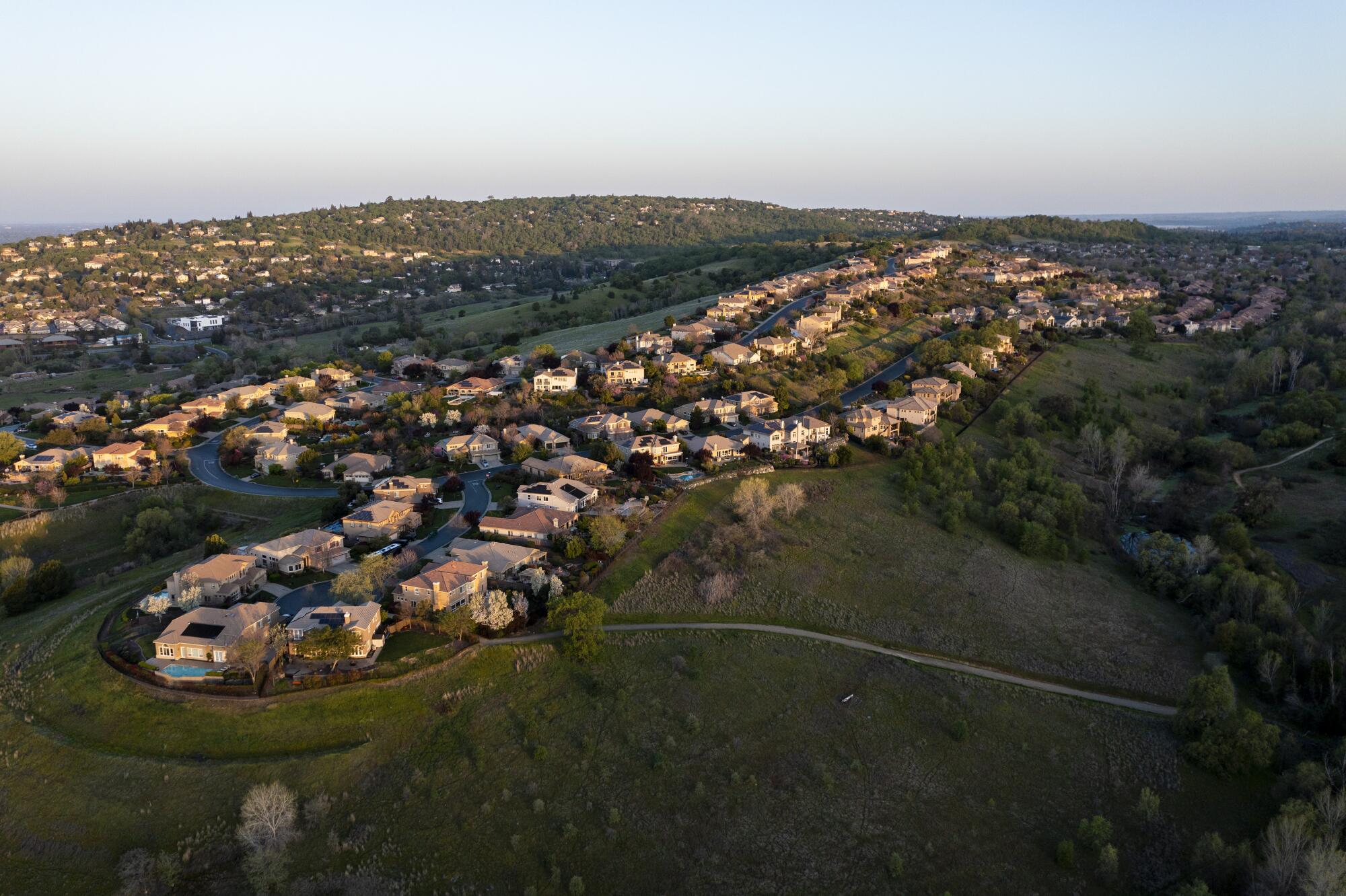
Before moving, Roby, who worked as an operations manager for a nonprofit organization, felt that he was always competing for room. Now the executive director of the El Dorado Community Foundation, Roby said he has seen not only a dramatic surge in the number of people migrating to the region since 2020, but also a heightened degree of civic engagement. In the last year, Roby said, there has been “a lot of scrutiny” over local positions, such as who is being chosen as the commissioner of a Board of Supervisors committee.
“People have time, they are paying attention and they’re raising ideological concerns,” he said. “I think that encapsulates the big conversation going on in El Dorado County: Where does the community see itself?”
Though he hasn’t experienced animosity, Roby has heard some locals say that they want to maintain their region’s more conservative, underdeveloped aura, and fear that newcomers are changing that character. Some 41% of active voters in El Dorado County are Republicans, according to 2020 data from the county’s election department, while 31% are Democrats. About 21% are registered with no party preference.
“Out of my three neighbors, two have moved because they felt the county was becoming too liberal,” Roby said.
It’s too early to tell whether newer transplants will stay in El Dorado for years to come, or whether some will drift back to the Bay Area and other larger cities, said Austin, the UC Davis researcher. But some indicators, such as whether residents are starting businesses, making economic investments, or putting their kids in schools, can point to whether people will stay.
“I don’t think it’s going to be all or nothing,” Austin said. “I don’t think it will be a huge exodus. I don’t see tech companies reneging on indications that people are going to be able to work remotely.”
Higher-earning migrants also are creating new jobs for working-class locals, said Ruth Zermeño, a promotora, or community member trained to provide health education, who works with New Morning Youth and Family Services in Placerville.
“Since there are more families coming to live in this area, they need housekeeping services. There are more opportunities for work as well in the restaurants as cooks, servers,” she said, adding that there has also been an uptick in landscaping and construction work. Census Bureau data show 619 new housing building permits for the county in 2020, the most recent year for which figures were available.
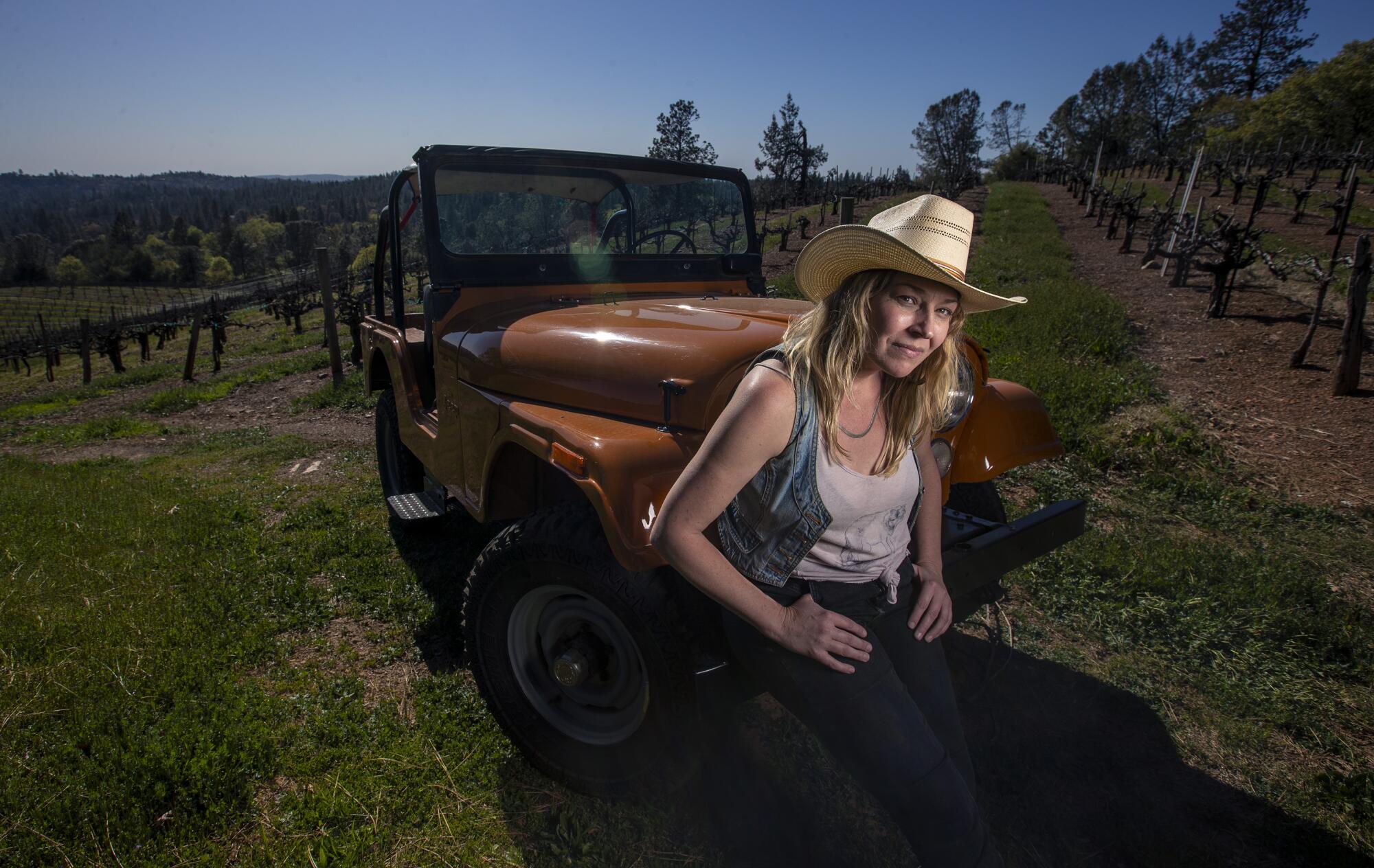
Yet some locals worry that the new Bay Area money is creating new inequalities. Sitting beneath a canopy of trees at her family’s Placerville winery, Lexi Boeger laid out the “complicated ecosystem” of how newcomers impact the county.
“The exchange rate between a Bay Area dollar and a Placerville dollar is pretty big,” she said from beneath the brim of her cowboy hat blocking the afternoon sun.
Boeger’s family purchased the winery estate, which dates back to the Gold Rush, in 1972. It employs about 60 people — large for El Dorado County, though small compared with many counterparts in Napa or Sonoma.
New transplants seem to embrace being surrounded by rolling vineyards and mountain vistas, she said. Some have added wine tastings, including the Boeger Winery’s specialty, barbera, to their list of local entertainment.
But the shortage in the housing supply has caused a “crisis” for many of her friends who can’t afford to wade into the housing market, she said.
“I’m in that boat,” said Boeger, who lives in an 800-square-foot apartment on the winery grounds with her son and daughter after recently leaving the family business. “And there’s nothing you can do to increase your wages here, because there is a cap. It’s a rural economy; it doesn’t generate that kind of money.”
Still, Boeger, who identifies as a “green libertarian” sees the value in “the cultural effect of having new people with different experiences and new perspectives coming in — especially into an insular community.”
Other longtime residents take a mixed view of the region’s growing popularity with Bay Area transplants.
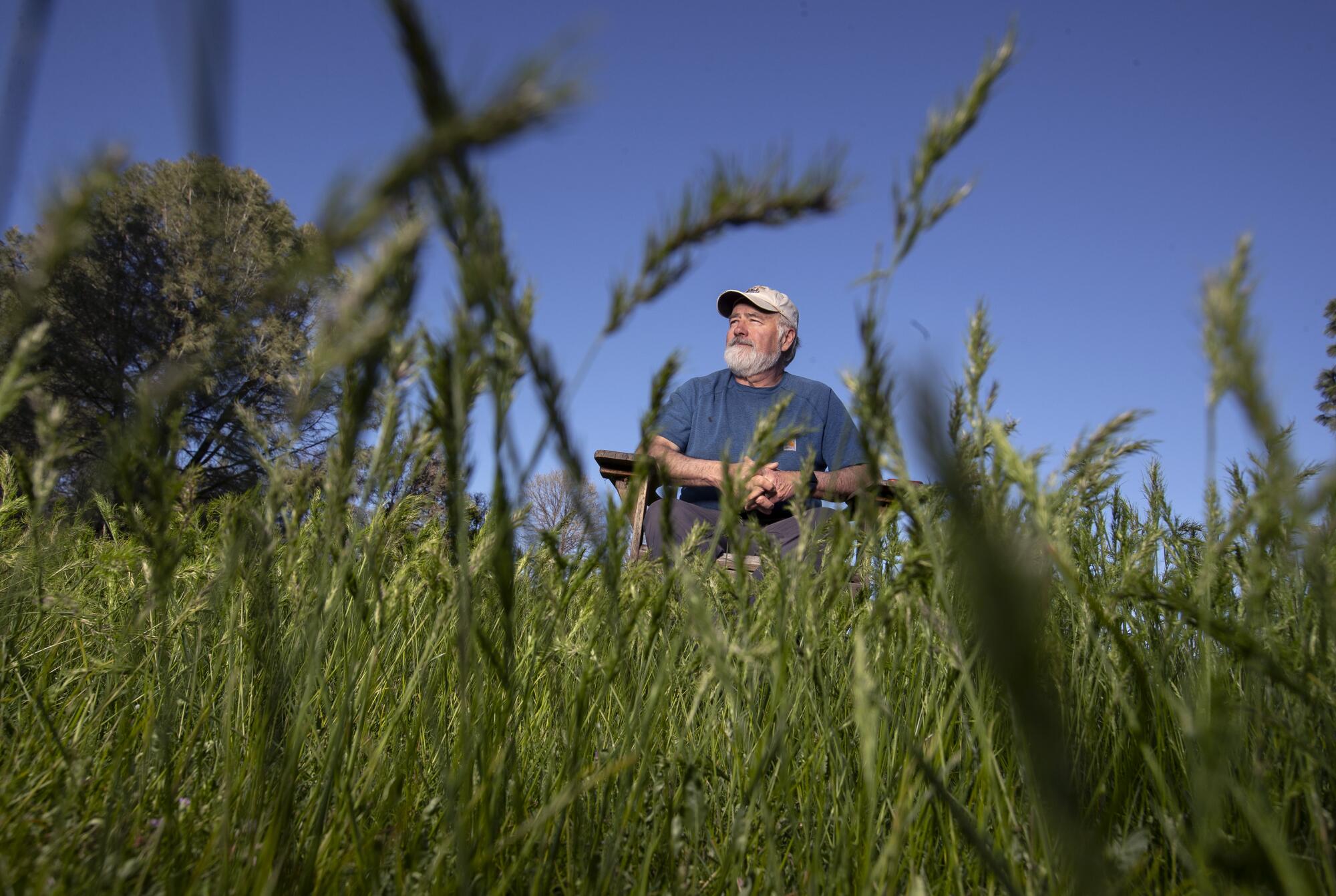
Steve Schwarzbach climbed up the stairs of the towering treehouse on his Placerville property on a recent weekday and recalled the changes he’s seen in the county since he and his wife purchased their home in 1980. At the time, they paid $68,000 for one acre. They later bought another four acres next door.
Drawn by teaching jobs for him and his wife, Schwarzbach moved to his neighborhood when it still was a farm-heavy community gaining interest from Sacramento workers. Rafting was just starting to become popular, he said, and as a young man that attracted him as a summer hobby.
“I was used to great coffee in the Bay Area, and that was unknown here. You couldn’t even buy good beans, and there was no internet,” he said as a flock of turkeys waddled across the sprawling field beneath his arboreal hideout.
The retired U.S. Geological Survey worker said that there’s been more diversity of thought in recent years, “people with broader views, more worldly, more cosmopolitan and less parochial.” But he does worry about building McMansions that sacrifice trees for the sake of more indoor square footage or million-dollar views.
“Up here, it’s not grown as much, which I like. If it stays at 1% I’m OK with that,” he said, referring to his home in the hills. “If it goes to 15%, it’s going to change the character of the county.”
Schwarzbach also worries that those moving into the neighboring hills may not always know how to maintain their land to mitigate fire risks in the wildland-urban interface while staying in harmony with the rural landscape.
“The areas that are bordering Sacramento are more built up, but places that are farther up in the highways and valleys, they’re as forested and as densely green as any,” said Seva Rodnyansky, assistant professor of urban and environmental policy at Occidental College. “So as the county population grows ... it’s likely it’s going to be more homes in the hills or in the forest and that’s going to continue to add fire risk.”

For those packing up from more cosmopolitan parts of the state, there are elements of a trade-off. Kyle Sherman misses the food scene — the wide variety of fish he’d order during sushi dinners with his wife and being on a first-name basis with the people who worked at his favorite hole-in-the-wall Italian restaurant in San Mateo.
But he swapped his private golf club membership in the Bay for one within the El Dorado Hills gated community he moved to last fall. One of their daughters is now enrolled at the local high school, and the other is a college student.
“If my meetings end at 4 o’clock, I’ll jump in my golf cart and go down and either hit golf balls at the range or play six, seven or eight holes,” said Sherman, who works remotely for a tech company that provides cloud-based communications.
For Sherman and his family, the decision to move came down to quality of life and looking at how far a dollar stretches in El Dorado compared with the Bay.
“Dollar for dollar, the value isn’t there,” said the 46-year-old, sitting in the TV room of his $1.67-million home.
The family sold their 1,800-square-foot San Mateo home for about the same price they paid for the new one, switching their 6,000-square-foot lot for nearly an acre of land with a house more than twice the size. Their two-story home has a two-tiered backyard with a pool, basketball and bocce courts and other amenities.
Waldie, the author, said that the eastward surge to counties like El Dorado demonstrate how cultural, socioeconomic and ethnic divisions that persisted from the late 1870s until the early 2000s in California are being remixed, partly as a consequence of changing patterns of work and mobility but mostly because the state has run out of enclaves that offer the coastal California dream without costing millions.
“Californians and would-be Californians are moving to these places because there is nowhere else in California,” he said.
At the eastern edge of El Dorado County, some 80 miles from Sherman’s house, Fran Faulknor and her husband, Graham, moved into a home in South Lake Tahoe last September after mulling the decision for several years. Like it did for many pandemic-driven families, the ability to work remotely cemented their decision to leave San Mateo.
Faulknor, who works for an investment management firm, loves the active, outdoorsy lifestyle that defines Tahoe. Her husband grew up visiting the lake and the mountains during stays at his grandparents’ home.
The pair regularly mountain bike, hike with their 11-year-old pit bull Bella and snowboard in the winter. But they know they are “the definition of” gentrifiers, Faulknor said, and they are trying to be “good members of the community, not just coming in and trying to change it.”
They’ve joined the Tahoe Area Mountain Bike Assn. and are helping to start a weekly ride with locals in an effort to integrate as best they can. They have made friends with their neighbors, many of whom are longtime residents, and Faulknor’s husband is looking at consulting opportunities that would allow him to partner with local businesses.
“We’re the definition of affluent yuppies that result in pricing out locals and changing longstanding tradition,” Faulknor said.
But, she said, newcomers also can alter communities in a respectful and helpful way. That’s the kind of growth they would like to be part of.
This is the first in an occasional series of stories about Californians on the move, both to other states and within the Golden State.
More to Read
Sign up for Essential California
The most important California stories and recommendations in your inbox every morning.
You may occasionally receive promotional content from the Los Angeles Times.
